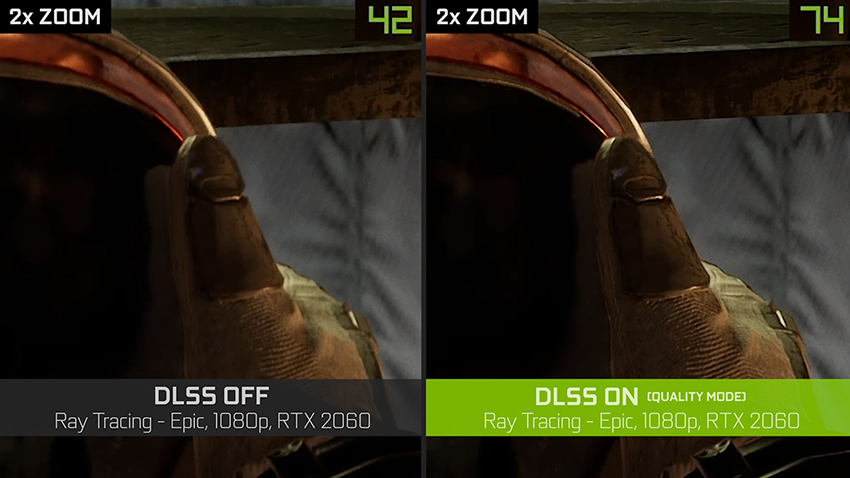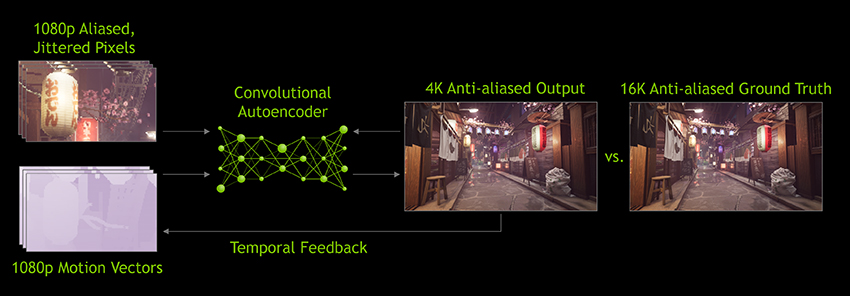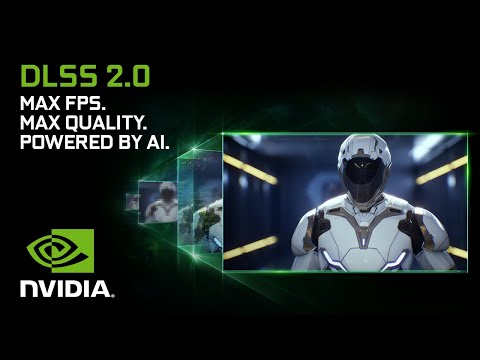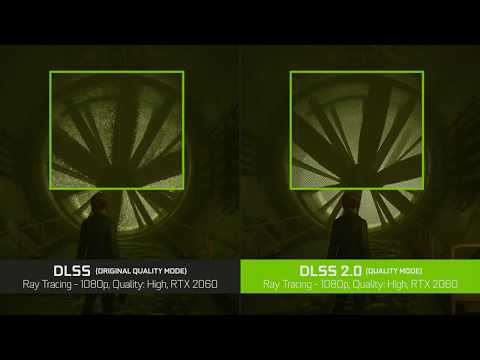Artificial intelligence is revolutionizing gaming – from in-game physics and animation simulation to real-time rendering and AI-assisted broadcasting features. With Deep Learning Super Sampling (DLSS), NVIDIA set out to redefine real-time rendering through AI-based super resolution – rendering fewer pixels and then using AI to construct sharp, higher resolution images. With our latest 2.0 version of DLSS, we’ve made big advances towards this vision.
Powered by dedicated AI processors on GeForce RTX GPUs called Tensor Cores, DLSS 2.0 is a new and improved deep learning neural network that boosts frame rates while generating beautiful, crisp game images. It gives gamers the performance headroom to maximize ray tracing settings and increase output resolutions.
DLSS 2.0 offers several key enhancements over the original version:
Superior Image Quality – DLSS 2.0 offers image quality comparable to native resolution while rendering only one quarter to one half of the pixels. It employs new temporal feedback techniques for sharper image details and improved stability from frame to frame.
Great Scaling Across All GeForce RTX GPUs and Resolutions – A new AI network more efficiently uses Tensor Cores to execute 2X faster than the original. This improves frame rates and eliminates previous limitations on which GPUs, settings, and resolutions could be enabled.
One Network For All Games – The original DLSS required training the AI network for each new game. DLSS 2.0 trains using non-game-specific content, delivering a generalized network that works across games. This means faster game integrations, and ultimately more DLSS games.
Customizable Options – DLSS 2.0 offers users 3 image quality modes – Quality, Balanced, Performance – that control the game’s internal rendering resolution, with Performance mode enabling up to 4X super resolution (i.e. 1080p → 4K). This means more user choice, and even bigger performance boosts.

Deliver Us the Moon – DLSS 2.0 substantially boosts performance while maintaining –and in some cases improving– image quality.
Using our Neural Graphics Framework, NGX, the DLSS deep neural network is trained on a NVIDIA DGX-powered supercomputer.
DLSS 2.0 has two primary inputs into the AI network:
1.Low resolution, aliased images rendered by the game engine
2.Low resolution, motion vectors from the same images — also generated by the game engine
Motion vectors tell us which direction objects in the scene are moving from frame to frame. We can apply these vectors to the previous high resolution output to estimate what the next frame will look like. We refer to this process as ‘temporal feedback,’ as it uses history to inform the future.

The NVIDIA DLSS 2.0 Architecture
A special type of AI network, called a convolutional autoencoder, takes the low resolution current frame, and the high resolution previous frame, to determine on a pixel-by-pixel basis how to generate a higher quality current frame.
During the training process, the output image is compared to an offline rendered, ultra-high quality 16K reference image, and the difference is communicated back into the network so that it can continue to learn and improve its results. This process is repeated tens of thousands of times on the supercomputer until the network reliably outputs high quality, high resolution images.
Once the network is trained, NGX delivers the AI model to your GeForce RTX PC or laptop via Game Ready Drivers and OTA updates. With Turing’s Tensor Cores delivering up to 110 teraflops of dedicated AI horsepower, the DLSS network can be run in real-time simultaneously with an intensive 3D game. This simply wasn’t possible before Turing and Tensor Cores.
Control
Remedy Entertainment’s Control was one of 2019’s best single-player games, and also one of its most advanced, with a suite of ray-traced effects that took its graphical fidelity to new heights.
Control originally launched with a prior version of DLSS that used an image processing algorithm to boost frame rates by over 70%. On March 26th, Remedy is releasing an update that adds new story-based downloadable content along with the latest AI-powered DLSS 2.0.
“With Control, we set out to create a visually stunning and immersive world,” said Mika Vehkala, Director of Technology at Remedy Entertainment. “Real-time ray tracing and NVIDIA DLSS made Control look amazing at launch, and upgrading to DLSS 2.0 made the game’s image quality better than ever.”
To read the Full Press Release from Nvidia Please Click Here.
The Latest GeForce 445.75 Game Ready Driver details and download links can be obtained Here.


